"The next big thing will start out looking like a toy."

The Ultimate Experience Economy Catalyst
In the fast-paced world of technology, reaching 50 million users is more than just a milestone—it's a testament to a product's ability to revolutionize how we live, work, and play. As we stand on the cusp of 2025, virtual reality (VR) technology is poised to join this elite club, potentially reshaping our digital landscape and redefining the Experience Economy. This journey to 50 million users is not just about numbers; it's about the transformative power of technology to create immersive, memorable experiences that change the way we interact with the world around us.
The Experience Economy: Where Technology Meets Human Desire
As Pine and Gilmore prophetically stated in 'The Experience Economy', "Experiences are a distinct economic offering, as different from services as services are from goods." VR stands at the forefront of this new economic era, offering unprecedented immersive experiences that blur the lines between the physical and digital worlds.
The Experience Economy describes a world where consumers value memorable experiences over mere products or services. In this economy, businesses thrive by staging engaging experiences that leave lasting impressions on their customers. Pine and Gilmore argue that
"Companies stage an experience whenever they engage customers in a personal, memorable way."
VR technology is the ultimate tool for staging such experiences, allowing users to step into entirely new worlds and situations.
Consider, for example, the difference between watching a documentary about ancient Rome and actually walking through a VR recreation of the Colosseum in its prime. The latter offers a level of engagement and memorability that traditional media simply can't match. This is the essence of the Experience Economy—creating moments that resonate on a deeply personal level.
Moreover, the Experience Economy isn't limited to entertainment. As businesses across sectors recognize the value of experiences, we're seeing a shift in how products and services are marketed and delivered. From retail stores designed as immersive brand experiences to banks offering VR financial planning sessions, the lines between different economic offerings are blurring.
Innovation Diffusion: The Path to 50 Million
To understand how technologies like VR reach 50 million users, we need to look at the Innovation Diffusion Theory, developed by Everett Rogers. This theory explains how, why, and at what rate new ideas and technologies spread through cultures.
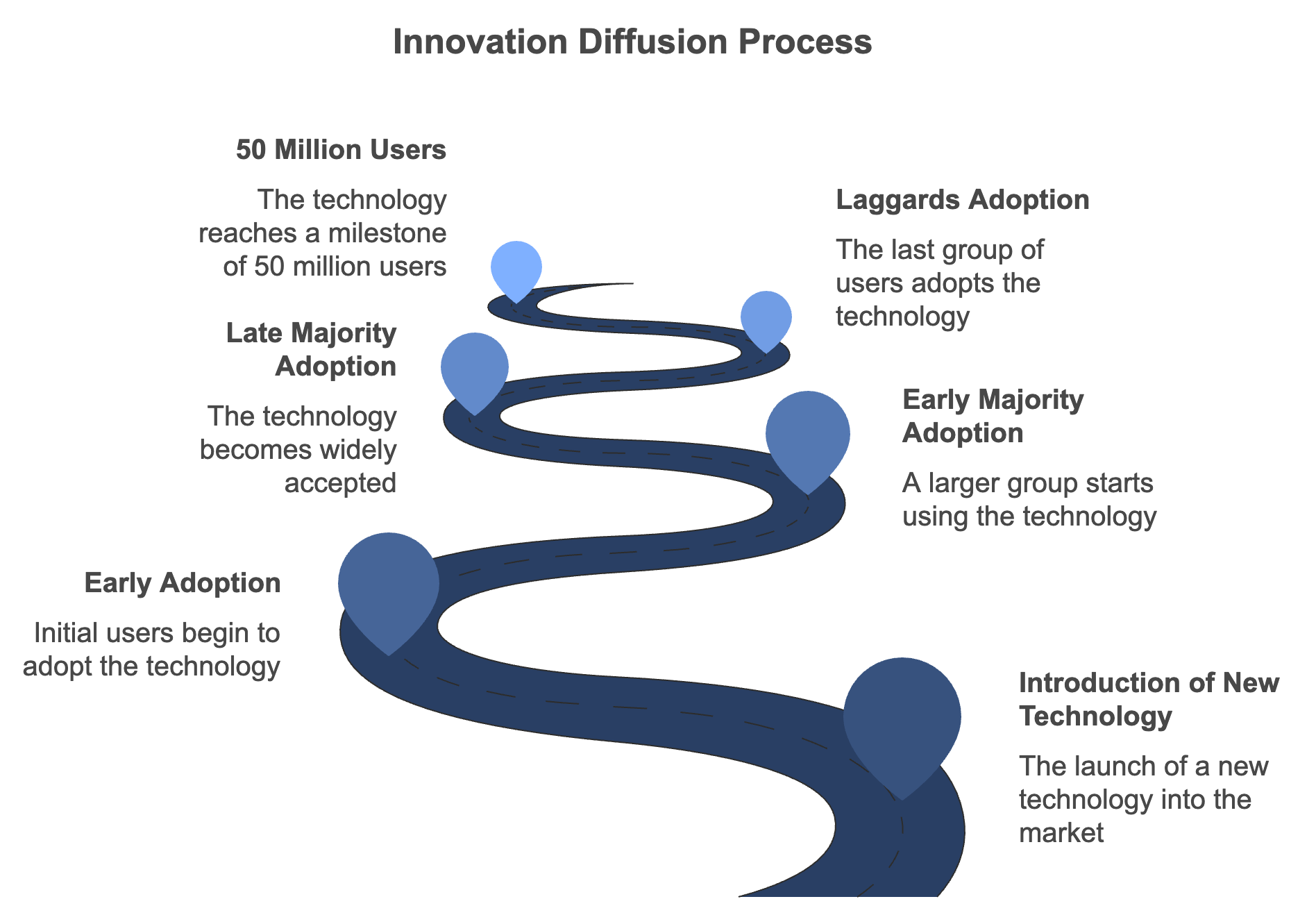
As we approach 2025, VR stands at the cusp of the Early Majority stage, with the potential to rapidly progress towards 50 million users. This transition is crucial, as it marks the point where a technology moves from being a novelty to a mainstream tool.
The journey of VR through these adoption stages has been fascinating to watch. In the Innovator stage, we saw VR primarily in research labs and among tech enthusiasts. The Early Adopter phase brought us the first consumer VR headsets, like the Oculus Rift and HTC Vive, which were embraced by gamers and tech-savvy individuals.
Now, as we enter the Early Majority phase, we're seeing VR expand beyond gaming into areas like education, healthcare, and business. This expansion is crucial for reaching the 50 million user milestone, as it broadens the potential user base significantly.
The Golden Triangle: Adoption, Investment, and Valuations
To truly understand the significance of the 50 million user milestone, we need to examine the interplay between adoption, investment, and valuations. These three factors form a symbiotic relationship that can propel a technology to stratospheric heights—or doom it to obscurity.
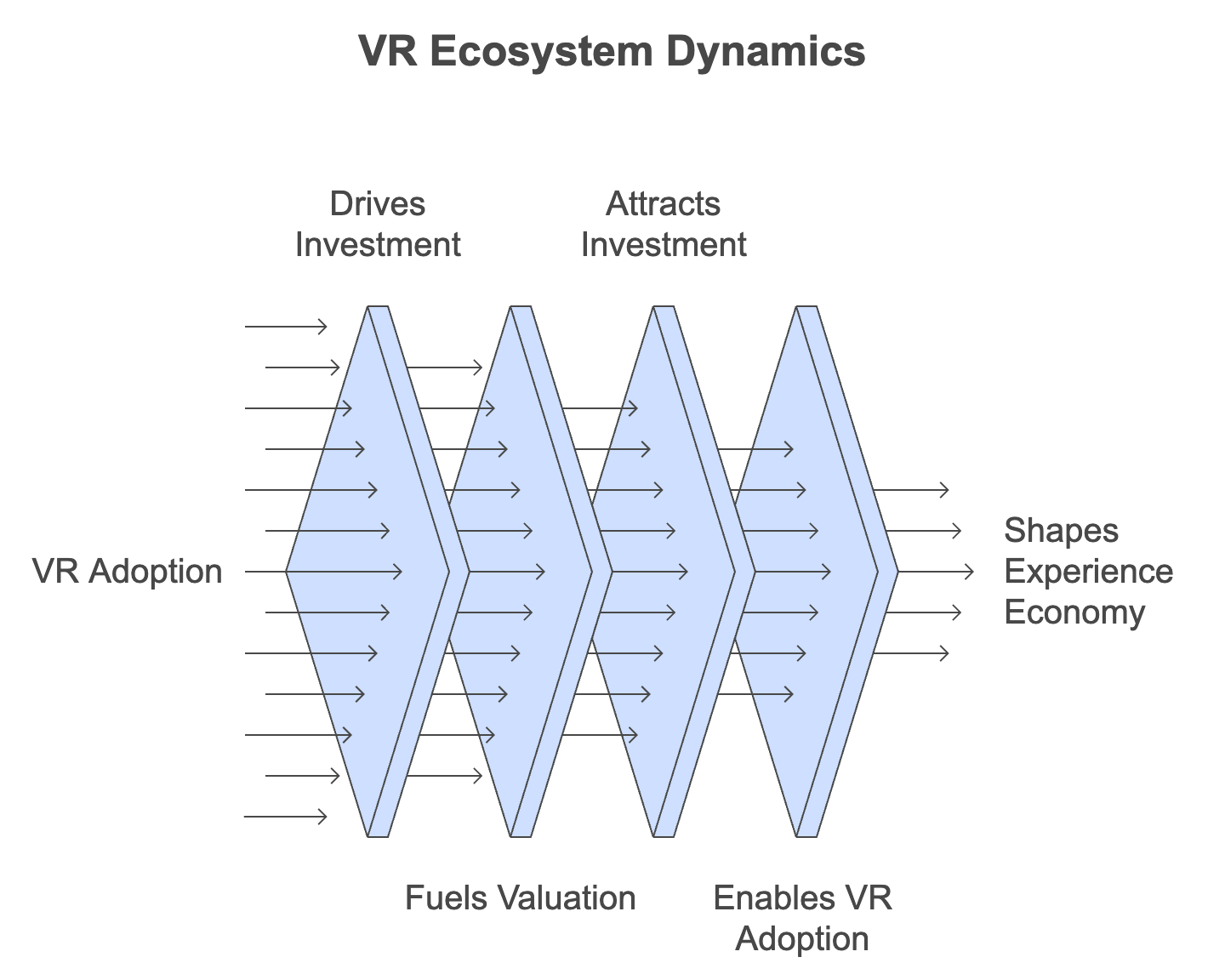
This cycle creates a powerful momentum as a technology approaches the 50 million user mark. We've seen this pattern play out with numerous technologies in the past:
- Facebook: As it raced towards 50 million users, its valuation skyrocketed. By the time it hit this milestone in 2007, it was valued at $15 billion. Today, with billions of users, its market cap exceeds $500 billion.
- Uber: The ride-hailing app reached 50 million riders in 2015, coinciding with a valuation of $51 billion. This valuation has since fluctuated but demonstrates the impact of widespread adoption.
- Airbnb: As it approached 50 million users in 2015, its valuation hit $25 billion. The company went public in 2020 and now has a market cap of over $100 billion.
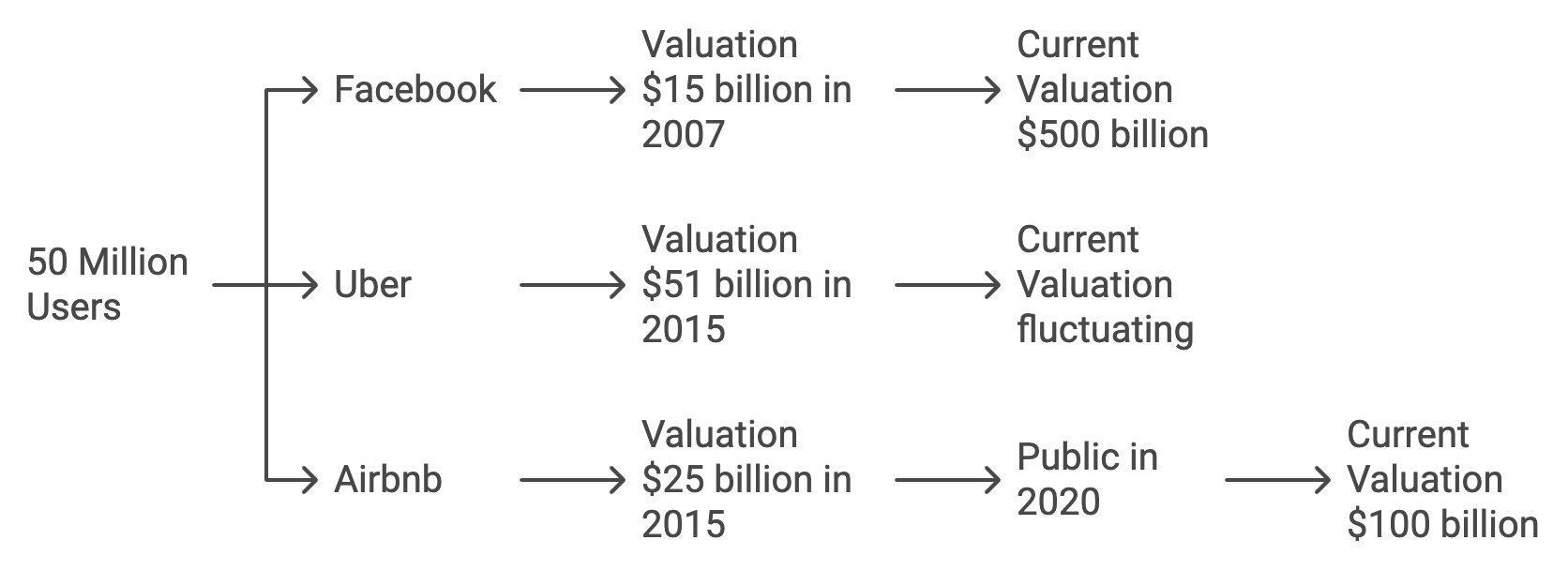
These examples illustrate the potential for explosive growth as a technology approaches and surpasses the 50 million user mark. For VR, this could mean a surge in investment, leading to rapid technological improvements and a broader range of applications.
Virtual Reality: The Next 50 Million User Technology?
As of 2023, the global VR market is estimated to have around 171 million users. However, the number of dedicated VR headset owners—the metric we're interested in for our 50 million milestone—is lower, estimated at around 34 million in 2023.

Several factors are driving VR growth:
- Technological Improvements: Better resolution, reduced latency, and more comfortable headsets are making VR more appealing. For example, the Oculus Quest 2 offers a wireless VR experience with high-resolution displays, a significant leap from earlier tethered headsets.
- Content Ecosystem: An increasing number of games, educational content, and professional applications are expanding VR's utility. Titles like "Half-Life: Alyx" have shown the potential for AAA gaming experiences in VR, while platforms like Engage are pioneering VR-based education and training.
- Price Reductions: As technology matures, VR headsets are becoming more affordable. The Oculus Quest 2, for instance, launched at a price point significantly lower than its predecessors, making VR more accessible to a broader audience.
- Remote Work Trend: The shift towards remote work has increased interest in virtual collaboration spaces. Platforms like Spatial and Glue are offering VR-based alternatives to traditional video conferencing, providing a sense of presence that 2D solutions can't match.
- Metaverse Hype: While the metaverse concept is still evolving, it has drummed up significant interest in VR technologies. Companies like Meta (formerly Facebook) are investing heavily in this vision of a connected virtual world.
Investment in VR has been substantial. In 2022, VR/AR startups raised over $3.6 billion in funding. Major tech companies like Meta, Apple, and Sony are investing heavily in VR technology, signaling their belief in its long-term potential.
The VR Experience: More Than Just Games
The authors of 'The Experience Economy' emphasize that "Work is theatre and every business a stage."
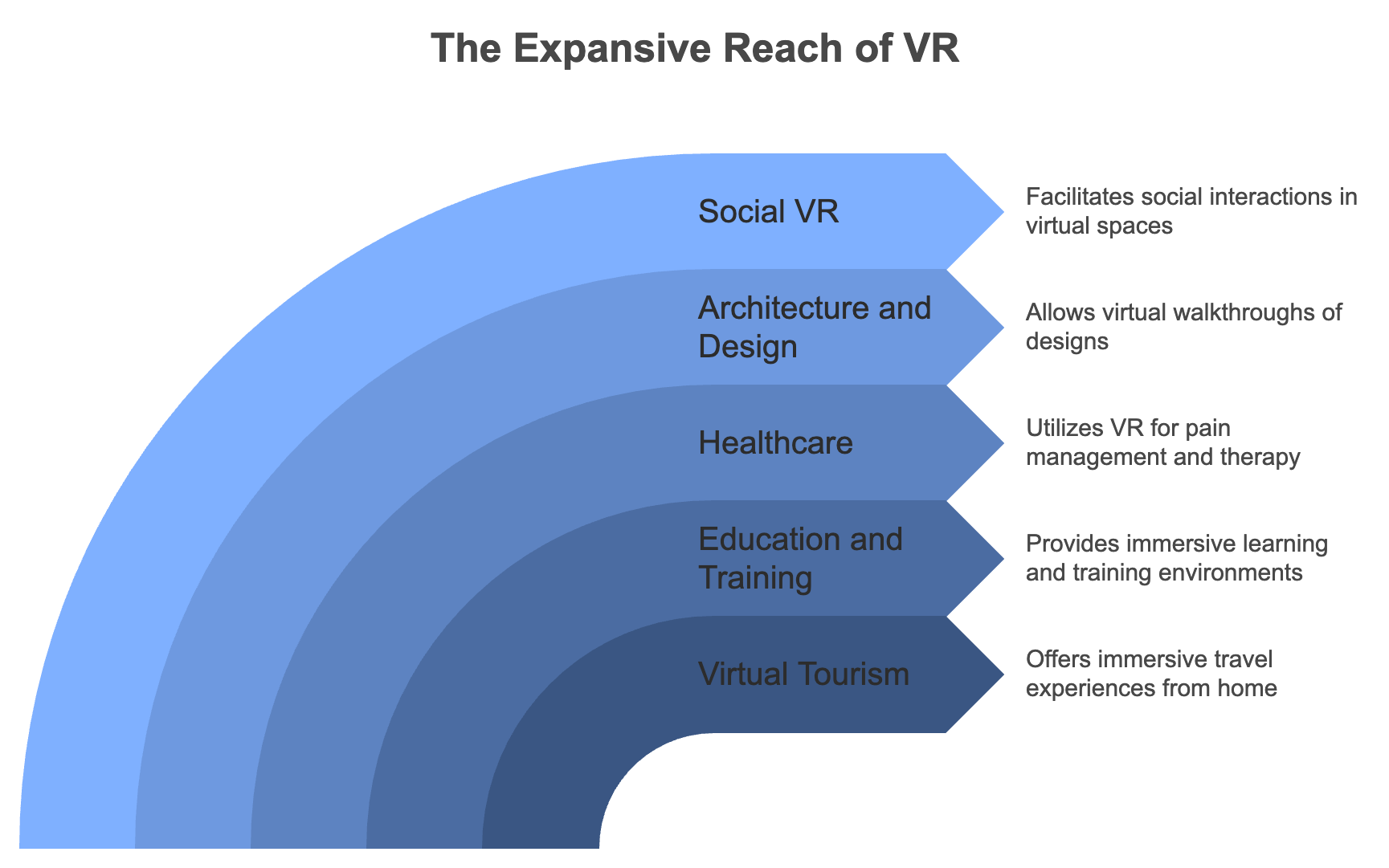
In the context of VR, this becomes literal - every virtual environment is a stage for unique customer experiences. VR's applications extend far beyond gaming, into areas such as:
- Virtual Tourism: Companies like Ascape are offering virtual travel experiences, allowing users to explore destinations from the comfort of their homes. This not only provides a new form of entertainment but also serves as a powerful marketing tool for the tourism industry.
- Education and Training: Platforms like ClassVR are bringing immersive learning experiences to classrooms, while companies like Strivr are using VR for employee training. These applications leverage VR's ability to create realistic, risk-free environments for learning and practice.
- Healthcare: VR is being used in pain management, physical therapy, and mental health treatment. For example, the company AppliedVR has received FDA approval for its VR-based chronic pain treatment.
- Architecture and Design: Firms like IrisVR are using virtual reality to allow architects and clients to walk through building designs before construction begins, revolutionizing the design process.
- Social VR: Platforms like VRChat and AltspaceVR are creating new forms of social interaction, allowing people to meet, socialize, and even attend events in virtual spaces.
These diverse applications demonstrate VR's potential to create value across multiple sectors of the Experience Economy, increasing its chances of reaching and surpassing the 50 million user mark.
The Network Effect: Why 50 Million Matters
As VR approaches 50 million users, we can expect to see Metcalfe's Law in action. This law states that the value of a network is proportional to the square of the number of connected users. In other words, as more people use VR, its value and utility increase exponentially.
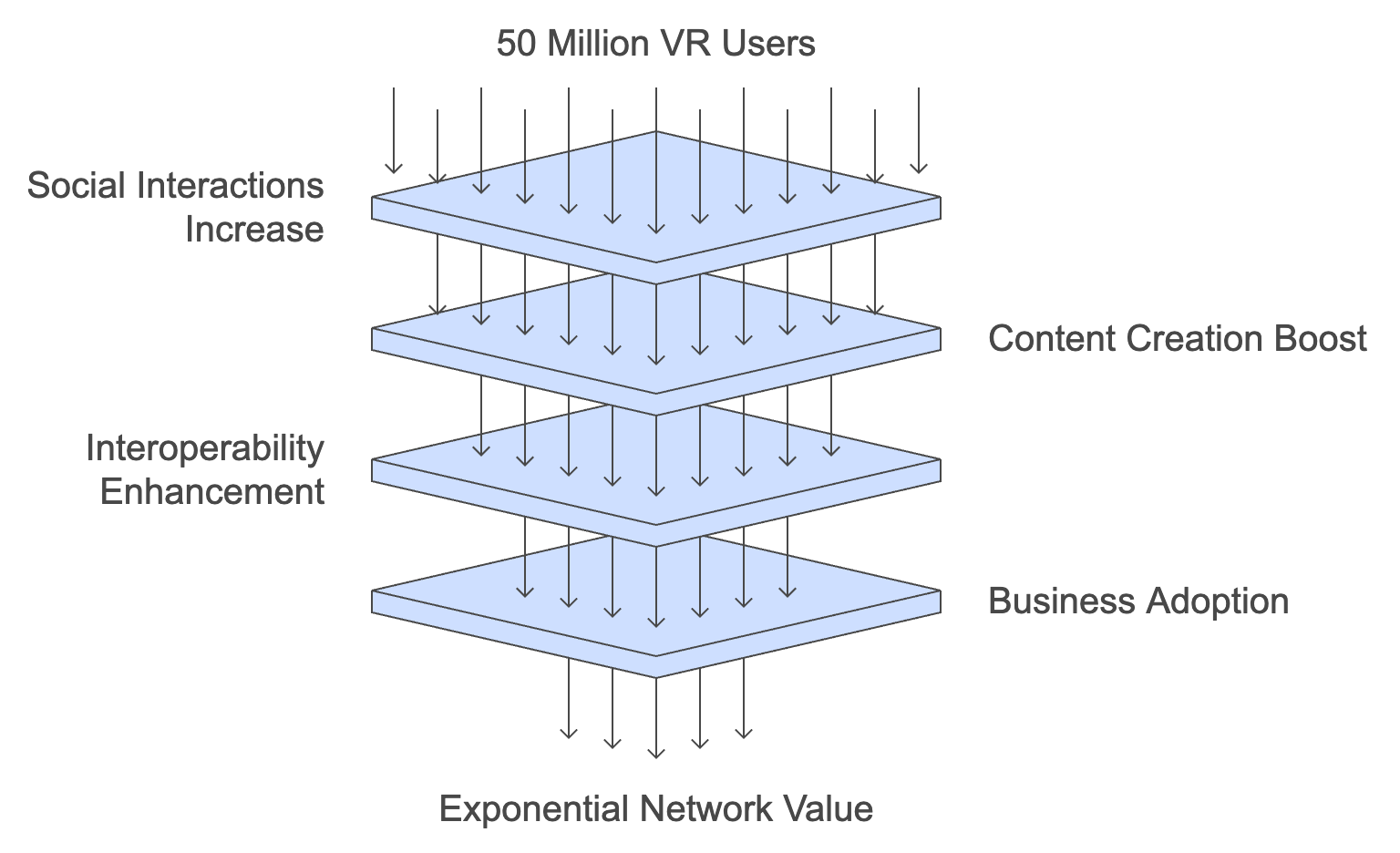
Pine and Gilmore note that "Experiences are inherently personal." As VR reaches more users, the diversity of personal, customized experiences will exponentially increase, aligning perfectly with this principle. This could manifest in several ways:
- More Social Interactions: As more people adopt VR, the opportunities for social interaction in virtual spaces will multiply. This could lead to the emergence of new virtual communities, events, and even economies.
- Increased Content Creation: A larger user base will attract more developers and content creators to the VR platform. This will result in a wider variety of high-quality apps, games, and experiences, further driving adoption.
- Enhanced Interoperability: With a critical mass of users, there will be greater pressure for different VR platforms to become more interoperable, potentially leading to a more unified VR ecosystem.
- Business Adoption: As VR becomes more mainstream, businesses will be more likely to incorporate it into their operations, from virtual meetings to product design and customer service.
The Tipping Point: Investment and Valuation Implications
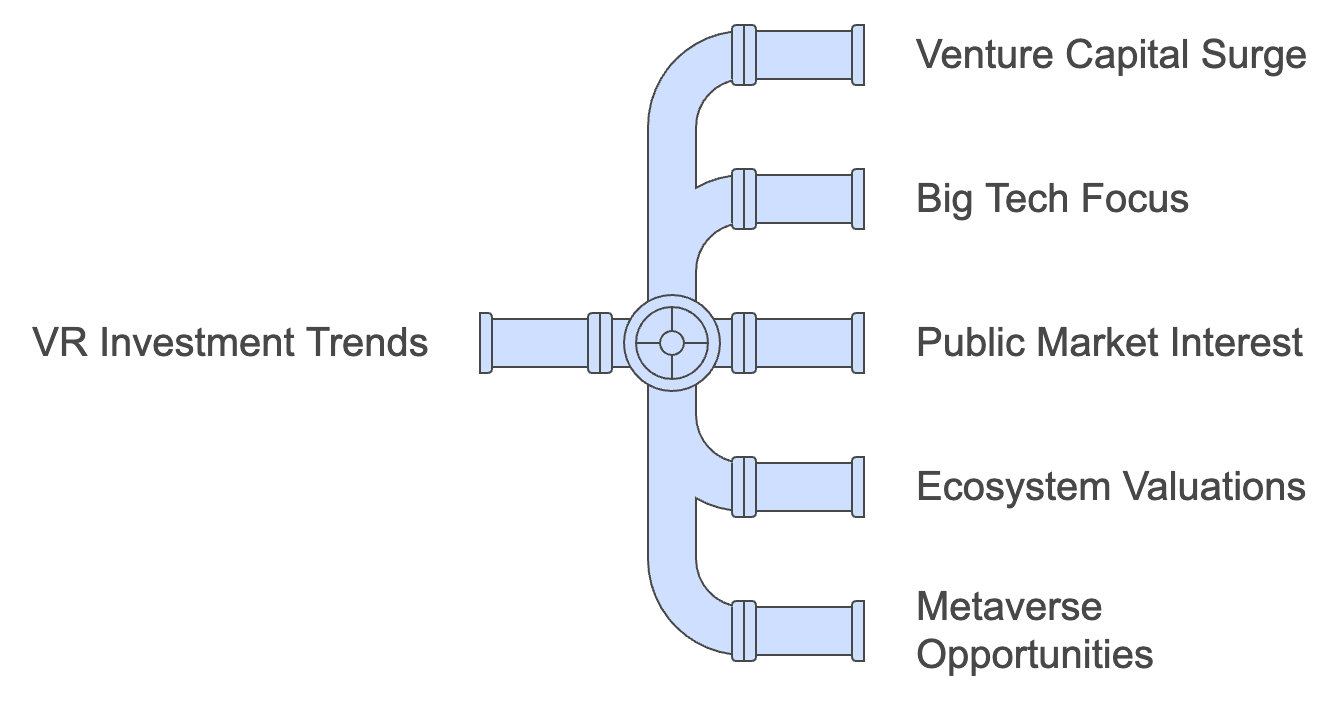
As VR approaches and potentially crosses the 50 million user threshold, we can expect significant shifts in investment patterns and company valuations:
- Increased Venture Capital: VR startups are likely to see a surge in funding as investors seek to capitalize on the growing market. This could lead to a new wave of innovation in hardware, software, and content creation.
- Big Tech Focus: Companies like Meta, Apple, and Google may double down on their VR investments, potentially leading to major product launches or acquisitions of promising VR startups.
- Public Market Interest: We may see more VR-focused companies going public, and existing public companies in the VR space could see their stock prices rise as the market expands.
- Ecosystem Valuations: Companies that provide supporting technologies or services for VR (like specialized chip manufacturers or content creation tools) could also see their valuations increase.
- Metaverse Plays: As VR is often seen as a gateway to the metaverse, companies positioning themselves as metaverse leaders could see their valuations skyrocket.
## Looking Beyond 2025: The Future of VR in the Experience Economy
As we look towards the future, crossing the 50 million user mark is just the beginning for VR.
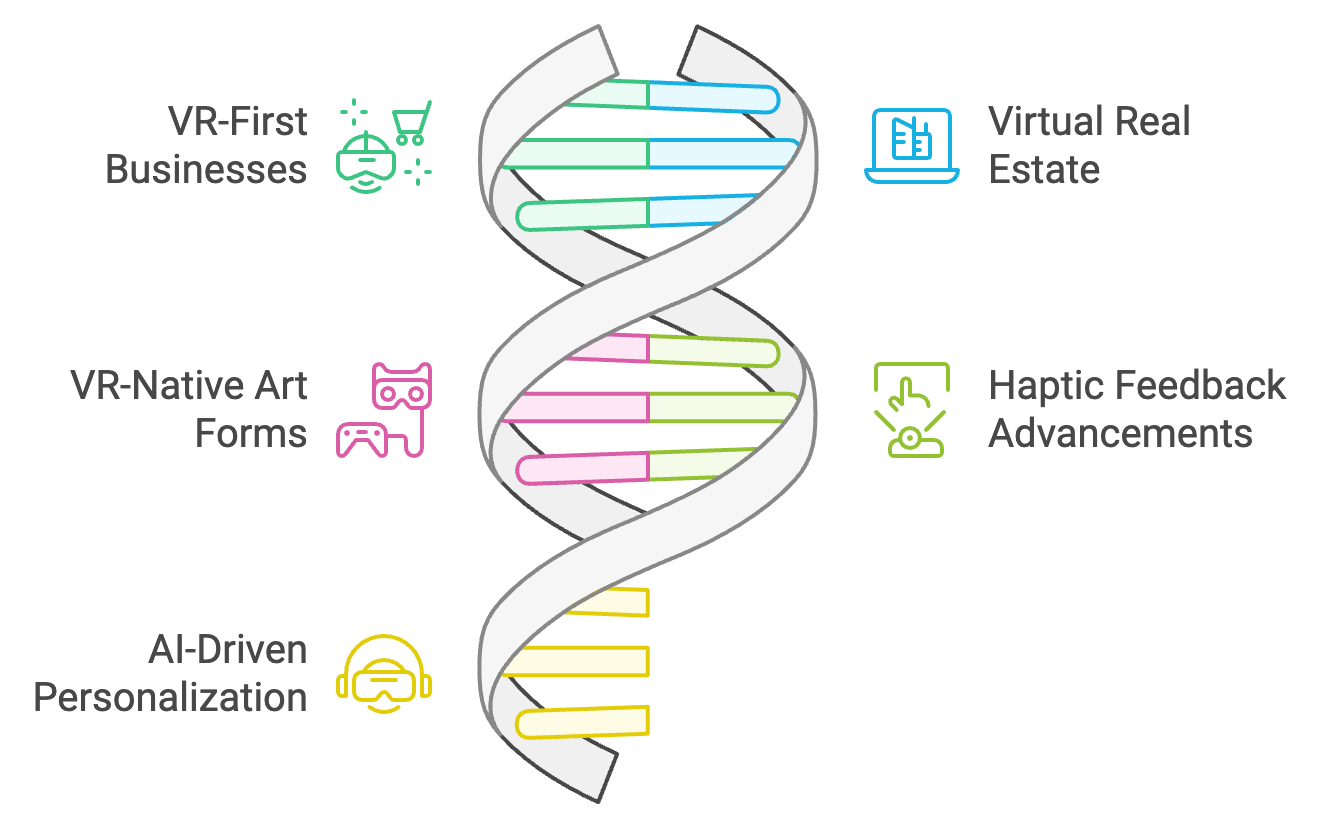
Here are some potential developments we might see:
- VR-First Businesses: Just as we saw "mobile-first" companies emerge with the rise of smartphones, we may see "VR-first" companies that build their entire business models around virtual reality experiences.
- Virtual Real Estate Boom: As more social and business interactions move to virtual spaces, we could see a boom in "virtual real estate" – premium locations in popular VR environments.
- VR-Native Art Forms: New art forms that are only possible in VR could emerge, potentially creating new categories of entertainment and cultural expression.
- Haptic Feedback Advancements: As VR technology evolves, more sophisticated haptic feedback systems could make virtual experiences feel increasingly real.
- AI-Driven Personalization: The combination of VR and AI could lead to highly personalized virtual experiences that adapt in real-time to user preferences and behaviors.
VR's Journey in the Experience Economy
As Pine and Gilmore wisely noted,
"Those businesses that relegate themselves to the diminishing world of goods and services will be rendered irrelevant. To avoid this fate, you must learn to stage a rich, compelling experience."
VR, as it approaches and surpasses 50 million users, is becoming the ultimate stage for these rich, compelling experiences in the modern economy.
The journey to 50 million users is more than a numerical milestone—it represents a fundamental shift in how we interact with technology and with each other. VR has the potential to redefine the Experience Economy, offering unprecedented levels of immersion and engagement across a wide range of industries and applications.
As we stand on the brink of this new era, businesses, investors, and consumers alike should be prepared for the transformative impact of widespread VR adoption. The technology is not just changing how we consume content or interact with digital environments; it's reshaping the very nature of experience itself.
Whether VR crosses the 50 million user threshold in 2025 or shortly after, one thing is certain: we are on the cusp of a new era in the Experience Economy. As VR transforms from a promising technology to a ubiquitous platform, it will undoubtedly create new opportunities, challenges, and experiences that we can only begin to imagine.
The future of VR is not just virtual – it's virtually limitless.

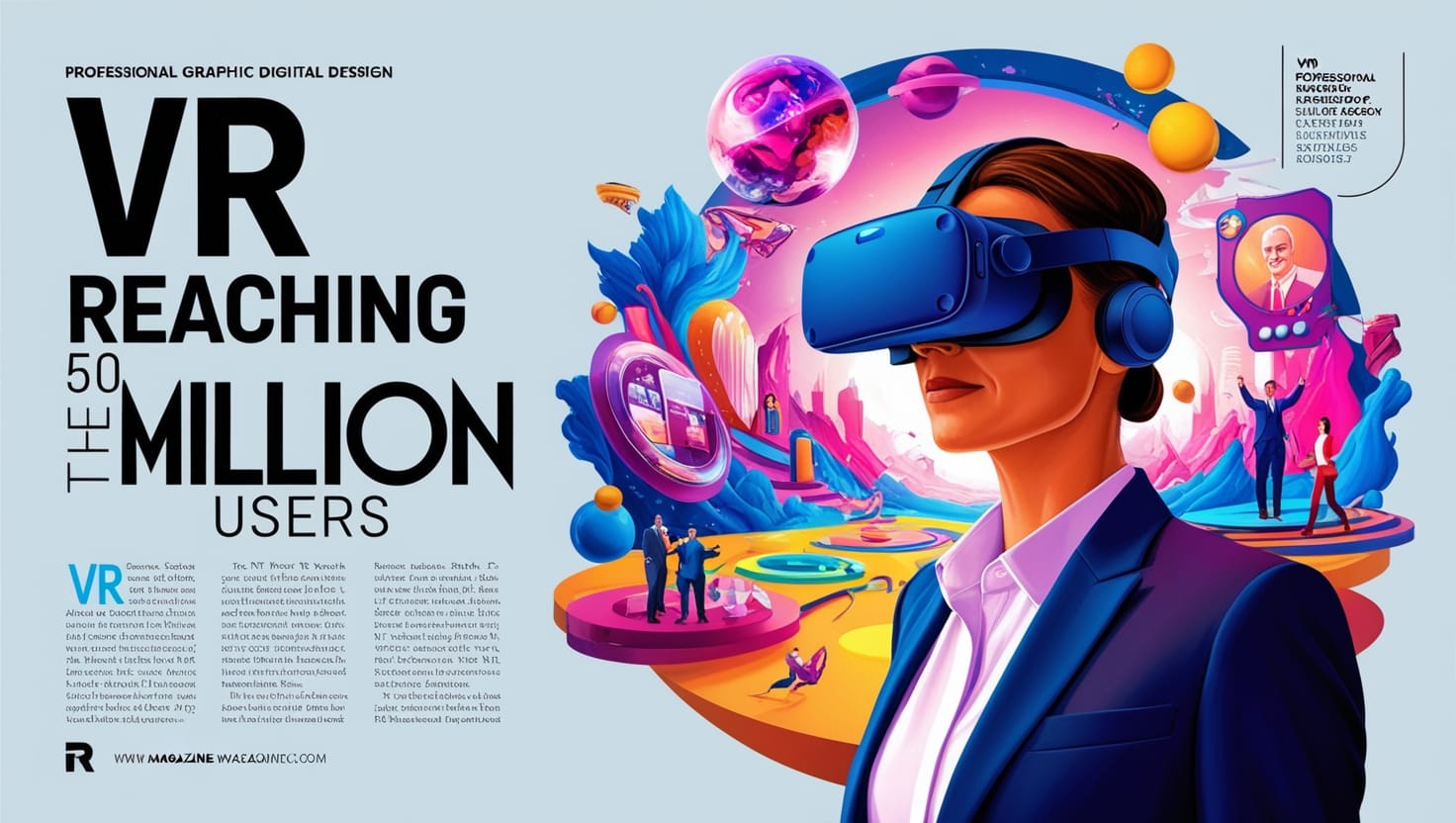

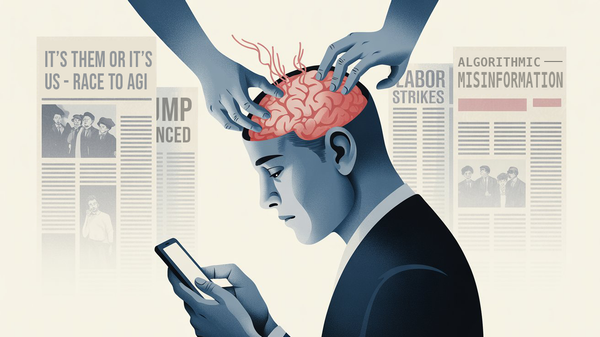
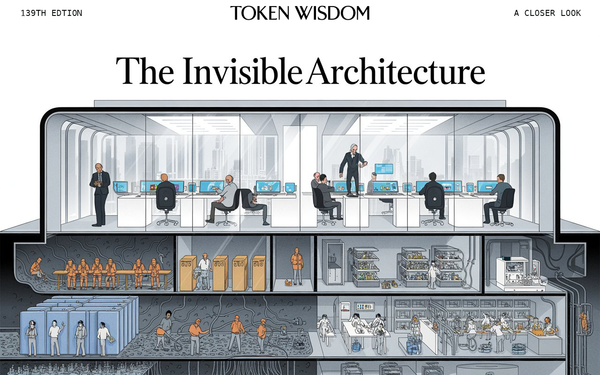
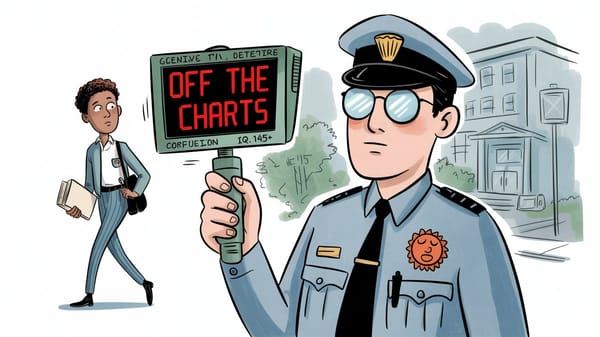

Member discussion